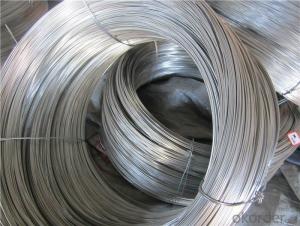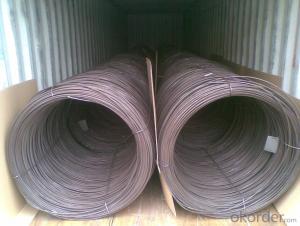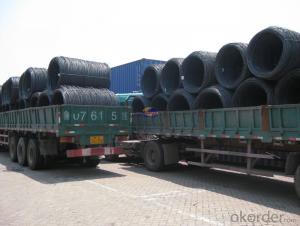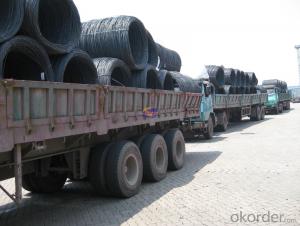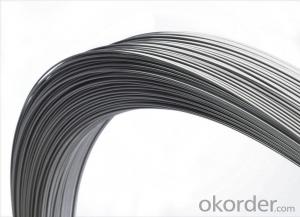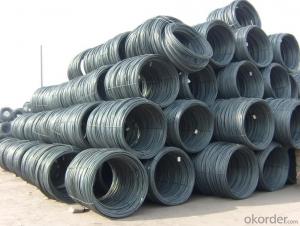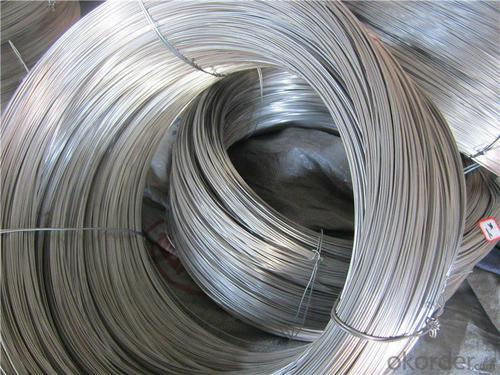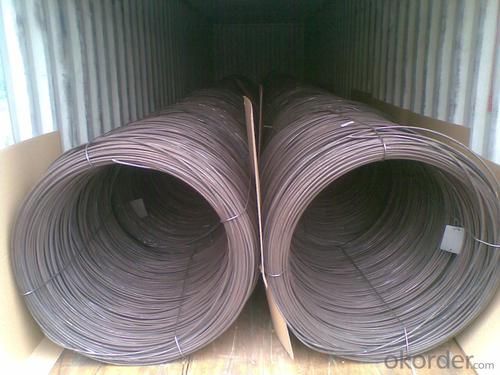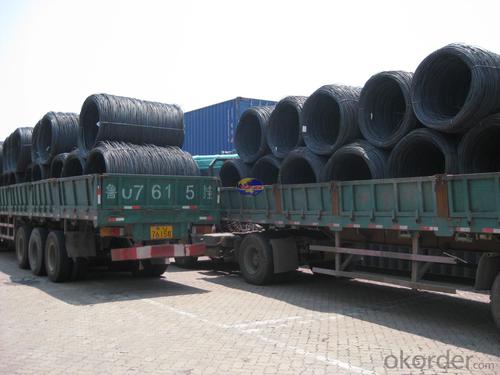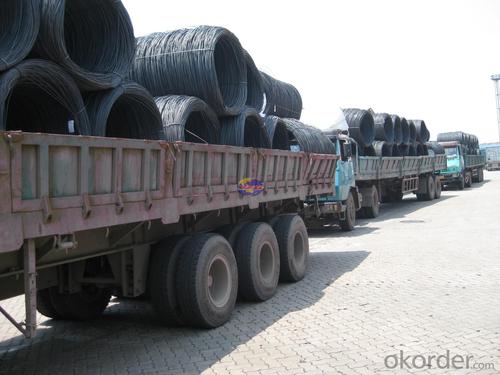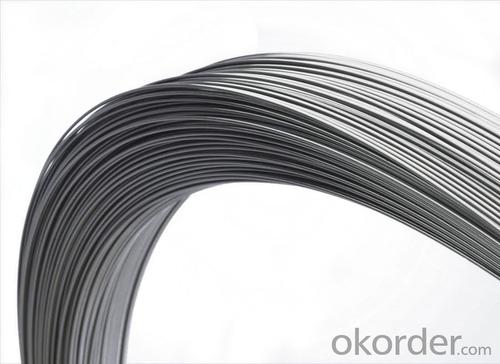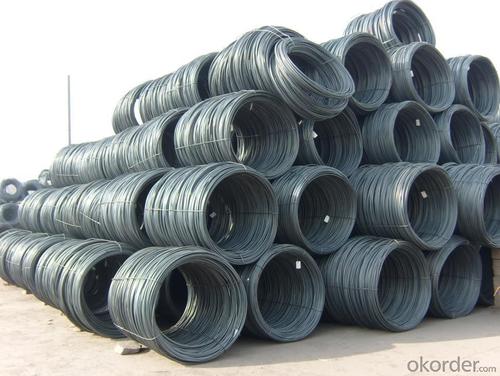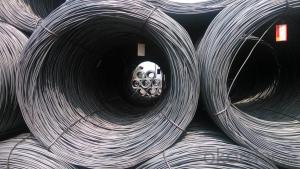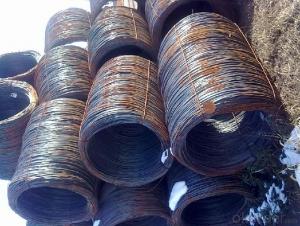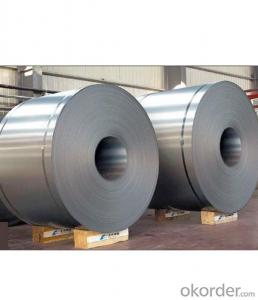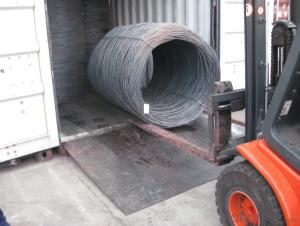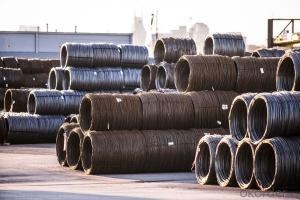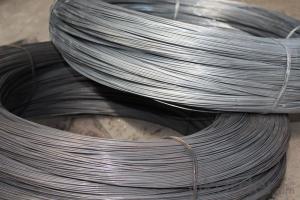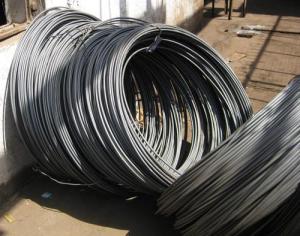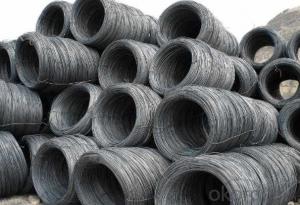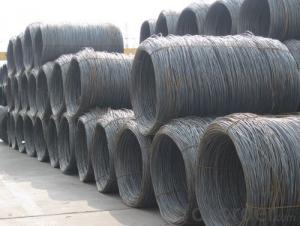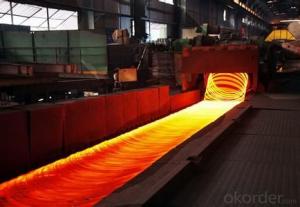SAE1006Cr Carbon Steel Wire Rod 17mm for Welding
- Loading Port:
- Shanghai
- Payment Terms:
- TT OR LC
- Min Order Qty:
- 100 m.t
- Supply Capability:
- 30000 m.t/month
OKorder Service Pledge
OKorder Financial Service
You Might Also Like
Specification
Description of SAE1006Cr Carbon Steel Wire Rod 17mm for Welding:
OKorder is offering Color Coated Steel Coil Prepainted Steel Coil at great prices with worldwide shipping. Our supplier is a world-class manufacturer of steel, with our products utilized the world over. OKorder annually supplies products to European, North American and Asian markets. We provide quotations within 24 hours of receiving an inquiry and guarantee competitive prices.
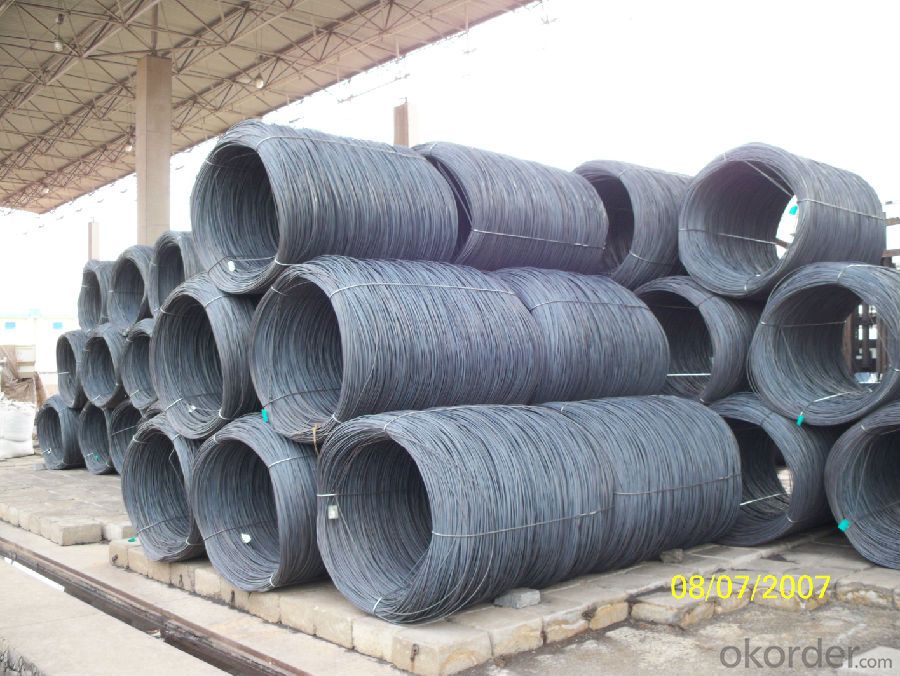
Applications of SAE1006Cr Carbon Steel Wire Rod 17mm for Welding:
Color Coated Steel Coil Prepainted Steel Coil are ideal for structural applications and are widely used in the construction of buildings and bridges, and the manufacturing, petrochemical, and transportation industries.
Main Product Features of SAE1006Cr Carbon Steel Wire Rod 17mm for Welding:
· Premium quality
· Prompt delivery & seaworthy packing (30 days after receiving deposit)
· Corrosion resistance
· Can be recycled and reused
· Mill test certification
· Professional Service
· Competitive pricing
Specifications of SAE1006Cr Carbon Steel Wire Rod 17mm for Welding:
1, Introduction: Color coated steel coils(sheets), i. E. PPGI, also called prepainted steel coils(sheets), are made of galvanized steel coils(sheets) with polymer coatings as surface. It's a new enclosure material and building board with characteristics of light-weighted, heat preserved&insulated, easily installed with bright colors.
2, Production Process: Pretreatment(Degreasing)_Drying_Chromating_Paint Basic Oil_Cooling_Drying_Color Coating_Cooling_Film-covering_Rolling Up
3, Characteristics:
Good at corrosion resistence. Besides zinc coating of the basic plate of galvanized steel sheet, the color coating as the surface has double lifetime to ensure better anticorrosion effect.
With excellent cold bending molded manufacturablity, PPGI products can be processed or directly used as final product. As being light-weighted and conveniently transported, they're widly used to replace wood to save energy.
4.There're thousands of colors can be chosen as per different application. Any color plays well in decoration.
No pollution with high recycling rate, PPGI coils and sheets are strongly recommended as enviroment-friendly products by the government.
5, eye bands and 4 circumferential bands in steel, galvanized metal fluted rings on inner and outer edges, galvanized.
| commodity | SAE1006Cr Carbon Steel Wire Rod 17mm for Welding |
| Techinical Standard: | JIS G3302-1998, EN10142/10137, ASTM A755 |
| grade | Q195,Q215,Q235,SAE1006,SAE1008 SAE1006Cr |
| Types: | Mesh welding |
| Base metal | galvanized, galvalume, cold rolled steel |
| Thickness | 0.14-1.0mm(0.16-0.8mm is the most advantage thickness) |
| Width | 610/724/820/914/1000/1200/1219/1220/1250mm |
| Type of coating: | PE, SMP, PVDF |
| Zinc coating | Z60-150g/m2 or AZ40-100g/m2 |
| Top painting: | 5 mic. Primer + 15 mc. R. M. P. |
| Back painting: | 5-7 mic. EP |
| Color: | According to RAL standard |
| ID coil | 508mm610mm |
| Coil weight: | 2--3MT |
| Package: | Properly packed for ocean freight exportation in 20'containers |
| Application: | Industrial panels, roofing and siding for painting/automobile |
| Price terms | FOB, CFR, CIF |
| Payment terms | 20%TT in advance+80% TT or irrevocable 80%L/C at sight |
| delivery time | 25 days after recepit of 20% TT |
| Remarks | Insurance is all risks |
| MTC 3.1 will be handed on with shipping documents | |
| We accept SGS certificatation test |
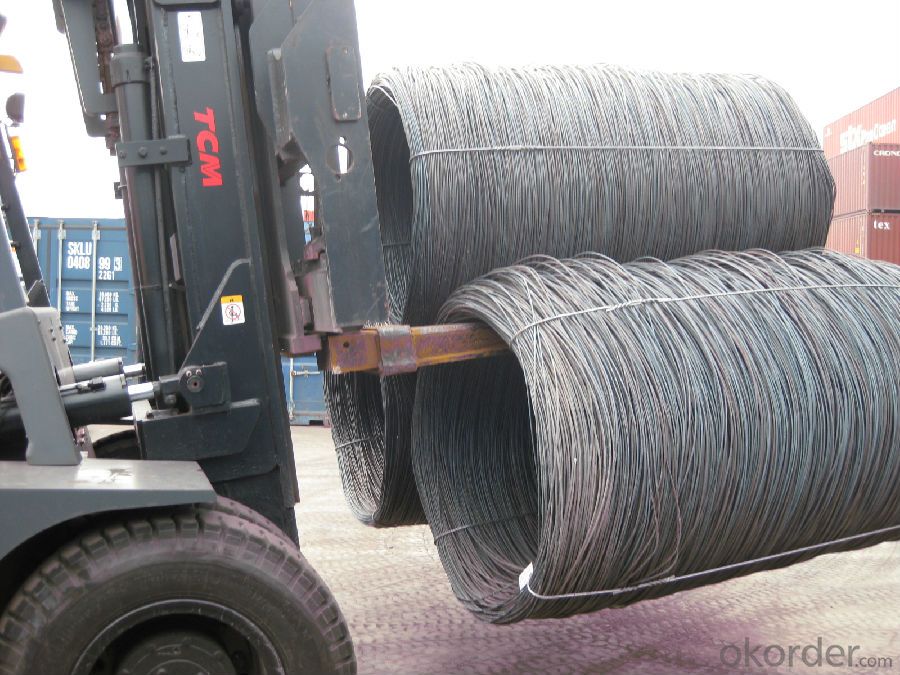
FAQ of SAE1006Cr Carbon Steel Wire Rod 17mm for Welding:
Q1: Why buy Materials & Equipment from OKorder.com?
A1: All products offered byOKorder.com are carefully selected from China's most reliable manufacturing enterprises. Through its ISO certifications, OKorder.com adheres to the highest standards and a commitment to supply chain safety and customer satisfaction.
Q2: How do we guarantee the quality of our products?
A2: We have established an advanced quality management system which conducts strict quality tests at every step, from raw materials to the final product. At the same time, we provide extensive follow-up service assurances as required.
Q3: How soon can we receive the product after purchase?
A3: Within three days of placing an order, we will begin production. The specific shipping date is dependent upon international and government factors, but is typically 7 to 10 workdays.
Q4: What makes stainless steel stainless?
A4: Stainless steel must contain at least 10.5 % chromium. It is this element that reacts with the oxygen in the air to form a complex chrome-oxide surface layer that is invisible but strong enough to prevent further oxygen from "staining" (rusting) the surface. Higher levels of chromium and the addition of other alloying elements such as nickel and molybdenum enhance this surface layer and improve the corrosion resistance of the stainless material.
Q5: Can stainless steel rust?
A5: Stainless does not "rust" as you think of regular steel rusting with a red oxide on the surface that flakes off. If you see red rust it is probably due to some iron particles that have contaminated the surface of the stainless steel and it is these iron particles that are rusting. Look at the source of the rusting and see if you can remove it from the surface.
- Q: What are the advantages of using steel wire rod in mining applications?
- There are several advantages of using steel wire rod in mining applications. Firstly, steel wire rod offers high strength and durability, making it suitable for withstanding the harsh conditions and heavy loads in mining operations. Additionally, steel wire rod has excellent resistance to corrosion, which is crucial in underground mining environments where moisture and chemicals are present. Moreover, steel wire rod is highly flexible and can be easily bent or shaped to meet specific mining requirements, offering versatility in various applications. Lastly, steel wire rod is readily available and cost-effective, making it a cost-efficient choice for mining companies.
- Q: How are steel wire rods used in the manufacturing of mesh screens for filtration?
- Due to their strength, durability, and versatility, steel wire rods are vital components in the production of mesh screens used for filtration. To obtain the desired diameter and strength, these rods undergo a series of steps including heating, rolling, and cooling. Once formed, the wire rods are woven or welded together to construct the mesh screen. Mesh screens made from steel wire rods find applications in various industries for filtration purposes. In the water treatment sector, for instance, they are utilized to eliminate impurities, contaminants, and solid particles from water sources. The steel wire rods provide the necessary tensile strength and corrosion resistance, ensuring the longevity and effectiveness of the mesh screen. Customization options are available for the size and spacing of the wire rods used in manufacturing mesh screens for filtration. Different mesh sizes allow for the filtration of various particle sizes, enabling the screens to effectively capture and separate solids from liquids or gases. The steel wire rods also provide stability and structural integrity to the mesh screens, enabling them to withstand high-pressure filtration processes. To enhance their filtration capabilities, steel wire rods can be coated with different materials. For instance, a polymer coating can be applied to prevent clogging and improve the efficiency of the screen. Additionally, the mesh screens can be further processed and shaped into different forms, such as cylinders, cones, or flat sheets, depending on the design and application requirements of the filtration system. In conclusion, steel wire rods are essential in the manufacturing of mesh screens for filtration. Their strength, durability, and adaptability make them an ideal material for creating mesh screens that effectively separate and filter contaminants from various substances. This ensures the quality and purity of liquids and gases in numerous industries.
- Q: What are the different surface defects in steel wire rod?
- Some of the different surface defects in steel wire rod include scratches, pits, seams, cracks, and scale.
- Q: How is steel wire rod used in the manufacturing of wire for fishing lines?
- Steel wire rod is an essential component in the manufacturing of wire for fishing lines as it provides the necessary strength and durability required for fishing activities. It is first drawn through a series of dies to reduce its diameter to the desired thickness, and then coated with a protective layer to prevent corrosion. The resulting wire is then further processed and twisted to create fishing lines of various strengths and lengths, ensuring reliable performance and resilience while fishing.
- Q: What are the common production processes for fermium-coated steel wire rod?
- The common production processes for fermium-coated steel wire rod typically involve a series of steps. First, the steel wire rod undergoes surface preparation, including cleaning and removal of any impurities. Then, it is immersed in a solution containing fermium, ensuring a uniform coating on the surface. After coating, the wire rod is subjected to a drying process to remove any excess solution. Finally, it may undergo further treatments such as heat treatment or mechanical processes to enhance its properties before being ready for use.
- Q: What are the main factors affecting the product differentiation of steel wire rod?
- The main factors affecting the product differentiation of steel wire rod include the chemical composition, physical properties, size and shape, surface finish, and production process. These factors determine the specific characteristics and performance of the steel wire rod, allowing it to cater to various applications and meet specific customer requirements. Additionally, market demand, competition, and technological advancements also play a significant role in influencing the product differentiation of steel wire rod.
- Q: What is the average carbon content in steel wire rod?
- The average carbon content in steel wire rod typically ranges from 0.05% to 0.25%.
- Q: How is steel wire rod used in the production of piano wires?
- Steel wire rod is used in the production of piano wires as it serves as the raw material for manufacturing these wires. The wire rod undergoes a series of processes such as drawing, annealing, and twisting to transform it into high-strength and flexible piano wires. These wires are then used in the construction of piano strings, providing the necessary tension and resilience that produce the desired musical notes when struck or played.
- Q: What are the different surface defects that can affect the ductility of steel wire rod?
- Some of the different surface defects that can affect the ductility of steel wire rod include cracks, surface roughness, scale, pitting, and surface decarburization. These defects can weaken the material and reduce its ability to stretch or deform without breaking.
- Q: How is steel wire rod used in the manufacturing of wire forms for suspension bridges?
- Steel wire rod is a crucial component in the manufacturing of wire forms for suspension bridges. The use of steel wire rod allows for the creation of strong and durable wire structures that are capable of withstanding the immense weight and tension exerted on suspension bridges. Firstly, steel wire rod is used to create the main cables of the suspension bridge. These cables are responsible for supporting the weight of the bridge deck and the traffic load. The steel wire rod is typically twisted or bundled together to form a single, thick cable that can bear the load. The high tensile strength of the steel wire rod ensures that the cables can withstand the forces acting upon them without stretching or breaking. In addition to the main cables, steel wire rod is also utilized in the creation of other wire forms used in suspension bridges. These forms include suspenders, hangers, and cross braces. Suspenders are vertical wires that connect the main cables to the bridge deck, providing additional support. Hangers are horizontal wires that connect the bridge deck to the main cables, helping to distribute the load evenly. Cross braces are diagonal wires that provide lateral stability to the bridge, preventing swaying or twisting. The use of steel wire rod in the manufacturing of wire forms for suspension bridges offers several advantages. Firstly, steel is known for its exceptional strength and durability, making it an ideal material for withstanding the high tension and weight requirements of suspension bridges. Secondly, steel wire rod is highly resistant to corrosion, ensuring the longevity of the bridge and reducing maintenance costs. Overall, steel wire rod plays a crucial role in the manufacturing of wire forms for suspension bridges. Its strength, durability, and resistance to corrosion make it an essential material for creating the main cables, suspenders, hangers, and cross braces that support and stabilize these magnificent structures.
Send your message to us
SAE1006Cr Carbon Steel Wire Rod 17mm for Welding
- Loading Port:
- Shanghai
- Payment Terms:
- TT OR LC
- Min Order Qty:
- 100 m.t
- Supply Capability:
- 30000 m.t/month
OKorder Service Pledge
OKorder Financial Service
Similar products
Hot products
Hot Searches
Related keywords
